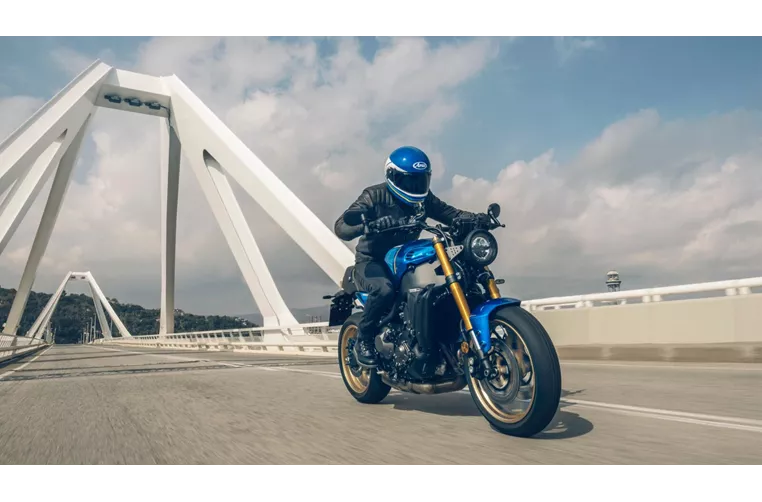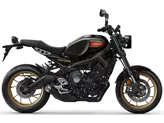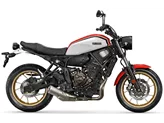Yamaha R1 2016 vs. Yamaha XSR900 2022

Yamaha R1 2016
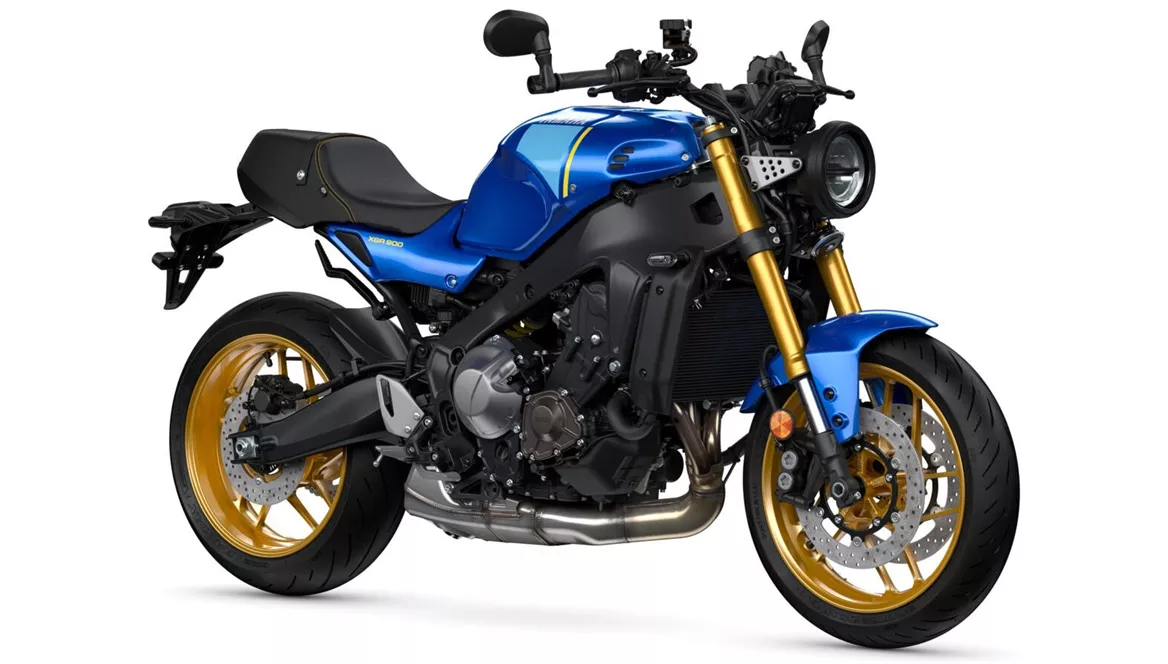
Yamaha XSR900 2022
Vue d’ensemble - Yamaha R1 2016 vs Yamaha XSR900 2022
The Yamaha R1 model year 2016 and the Yamaha XSR900 model year 2022 are two different motorcycles that cater to different riding preferences and styles.
Starting with the Yamaha R1 2016, it is a supersport bike that is designed for high-performance riding. It is equipped with a 998cc engine that produces 200 horsepower and 112.4 Nm of torque. The engine has a bore of 79mm and a stroke of 50.9mm, resulting in a high-revving and precisely controllable power delivery. The compression ratio is 13, which contributes to the bike's performance. The R1 features a 4-cylinder DOHC engine with 4 valves per cylinder. The cooling system is liquid-based, ensuring optimal engine temperature.
In terms of suspension, the R1 is equipped with an Upside-Down telescopic fork at the front, providing excellent handling and stability. The frame is made of aluminum, specifically a Deltabox frame, which is known for its rigidity and lightweight characteristics. The front brakes are double disk, ensuring strong and reliable stopping power. The R1 also features advanced rider assistance systems such as launch control and traction control, enhancing the bike's performance and safety.

Yamaha R1 2016
Moving on to the Yamaha XSR900 2022, it is a naked bike that offers a balance between sportiness and everyday usability. It is powered by an 889cc engine that produces 119 horsepower and 93 Nm of torque. The engine has a bore of 78mm and a stroke of 62.1mm, resulting in a powerful and responsive performance. The compression ratio is 11.5, which contributes to the bike's overall performance. Similar to the R1, the XSR900 features a 3-cylinder DOHC engine with 4 valves per cylinder. The cooling system is also liquid-based, ensuring optimal engine temperature.
In terms of suspension, the XSR900 is equipped with an Upside-Down telescopic fork at the front, providing a comfortable and controlled ride. The frame is made of aluminum, specifically a Twin Tube frame, which offers a good balance between rigidity and flexibility. The front brakes are double disk, providing reliable stopping power. The XSR900 also features a comprehensive electronics package, including ABS, riding modes, cornering ABS, ride by wire, shift assistant with blipper, cruise control, and traction control. This enhances the bike's safety and performance.
In terms of dimensions and weights, the R1 has a wheelbase of 1405mm and a seat height of 855mm. It has a kerb weight of 199kg (with ABS) and a fuel tank capacity of 17 liters. On the other hand, the XSR900 has a longer wheelbase of 1495mm and a lower seat height of 810mm. It has a slightly lighter kerb weight of 193kg (with ABS) and a smaller fuel tank capacity of 15 liters.
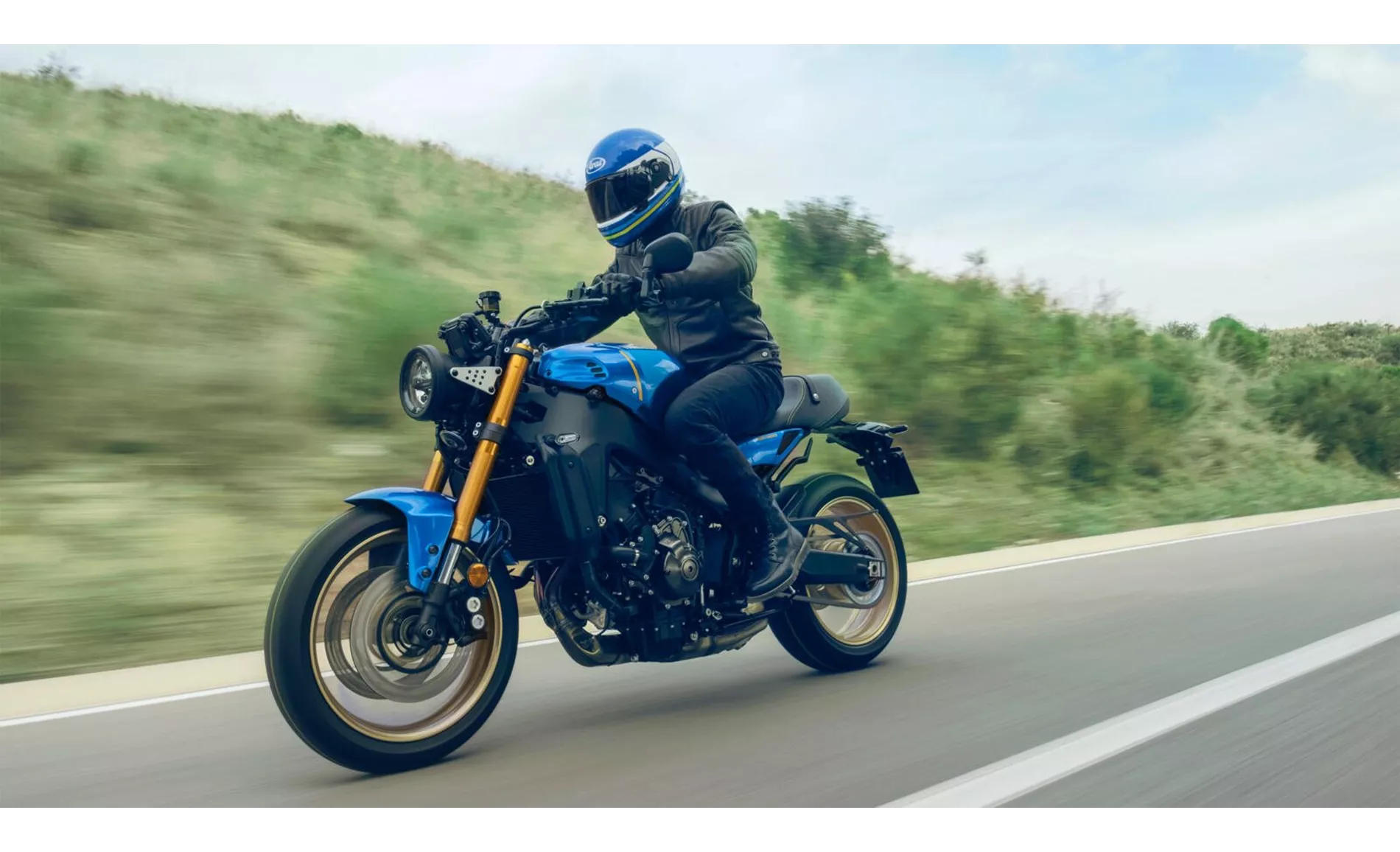
Yamaha XSR900 2022
In terms of strengths, the R1 2016 is known for its lively handling, high-revving and precisely controllable engine, and excellent electronics package. On the other hand, the XSR900 2022 has a powerful engine, quickshifter as standard, good brakes, a comprehensive electronics package, sporty but everyday ergonomics, value for money, and many accessories available ex works.
However, both bikes have their weaknesses. The R1 2016's weakness is that it only has a shift assistant for upshifting, while the XSR900 2022 has a hard seat and a low steering angle.
In conclusion, the Yamaha R1 2016 and the Yamaha XSR900 2022 are two different motorcycles that cater to different riding preferences. The R1 is a high-performance supersport bike, while the XSR900 offers a balance between sportiness and everyday usability. Both bikes have their strengths and weaknesses, and riders should consider their own preferences and riding style when choosing between the two.
Caractéristiques techniques Yamaha R1 2016 par rapport à Yamaha XSR900 2022
Avantages et inconvénients en comparaison
Avantages et inconvénients en comparaison
Yamaha R1 2016

La fusée high-tech de Yamaha est toujours à la pointe de la technologie en 2016. Radicale, polarisante et fascinante, elle réalise de puissants temps au tour. Elle est plus proche des motos de course que les autres 1000. Entre-temps, personne ne se plaint de l'avant. Sans "M", elle est le meilleur choix pour ceux qui n'ont de toute façon pas besoin d'Öhlins ou le meilleur choix pour ceux qui prévoient de toute façon une transformation sur circuit et qui aiment monter du matériel Öhlins "normal", sans truc électrique.
Yamaha XSR900 2022
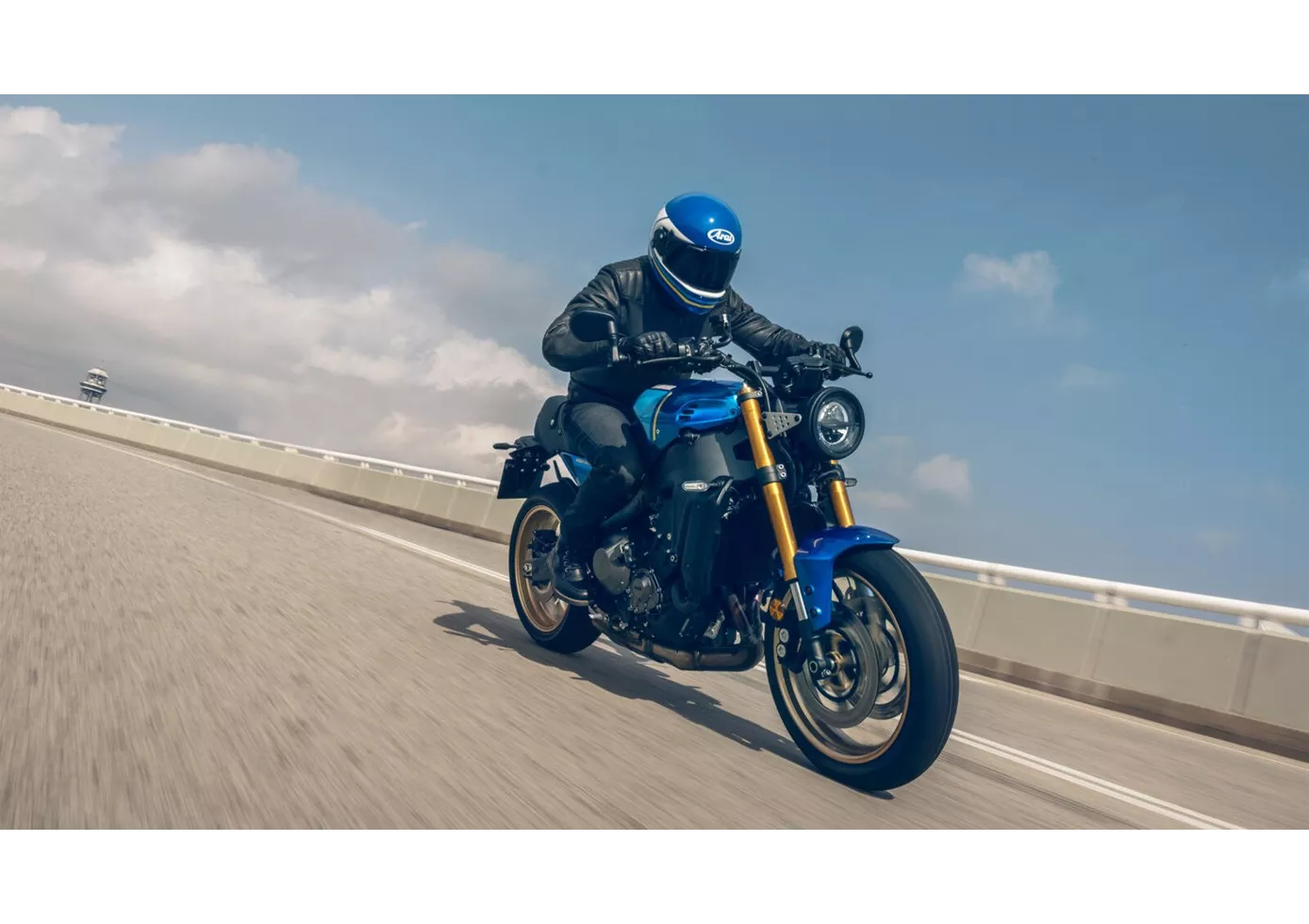
La XSR900 ne veut en aucun cas cacher qu'elle utilise la MT-09 comme base. Avec son package électronique complet, son puissant trois cylindres et ses composants de châssis sportifs, cette moto rétro permet de rouler de manière incroyablement sportive. Espérons seulement que l'on trouvera bientôt une selle plus confortable dans les accessoires - car il faudra faire de nombreux arrêts intermédiaires sur la selle de série.
Comparaison des prix Prix moyen du marché Yamaha R1 vs Yamaha XSR900
There are a few key differences between a Yamaha R1 2016 and a Yamaha XSR900 2022. In terms of price, the actual average price of a Yamaha R1 2016 is about 52% higher. A Yamaha R1 2016 experiences a loss of 670 USD in one year of ownership. This is offset by a loss of 290 USD for a Yamaha XSR900 2022. Compared to Yamaha XSR900 2022 there are less Yamaha R1 2016 bikes available on the 1000PS.de Marketplace, specifically 6 compared to 59. It takes less time to sell a Yamaha R1 with 73 days compared to 97 days for a Yamaha XSR900. Since model year 2005 1000PS.de editors have written 80 reviews for the Yamaha R1 and 30 reviews for the Yamaha XSR900 since model year 2016. The first review for the Yamaha R1 was published on 4/28/2003 and now has more than 3,900 views. This compares to more than 17,600 views for the first review on Yamaha XSR900 published on 11/25/2015.

